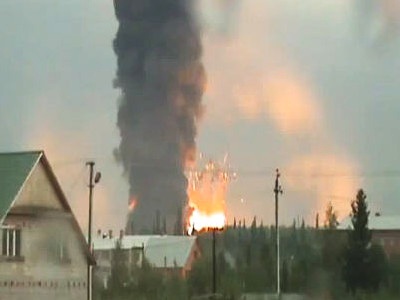Development of parts that 'burn out completely' when an uncontrollable satellite plunges into Earth is underway

In general, artificial satellites that have finished their roles are either guided to a
ESA --Drive to destruction
https://www.esa.int/ESA_Multimedia/Images/2021/06/Drive_to_destruction
Demising a SADM, in theory and practice – The Clean Space blog
https://blogs.esa.int/cleanspace/2021/06/16/demising-a-sadm-in-theory-and-practice/
Plasma wind tunnel annihilates satellite model in atmospheric reentry test | Live Science
https://www.livescience.com/plasma-tunnel-melts-satellite-model.html
When a satellite or spacecraft re-enters the atmosphere, the air in front of it is crushed at high speed, and the molecules in the air collide violently, causing adiabatic compression and high temperature. Therefore, spacecraft that are in trouble if it gets too hot adjust the angle and speed to prevent the maximum temperature from rising, but when re-entering an artificial satellite that has finished its role, it intentionally raises the temperature by rushing at a deep angle. Make sure it burns out before it falls to the surface. Even if parts remain, it is required to drop them in a place where human damage is unlikely to occur, such as in the middle of the sea.
However, sometimes the artificial satellite falls out of control, and the heat of re-entry not only does not burn out the parts, but it can also fall to a place where human damage can occur. According to ESA, satellite and spacecraft operators need to reduce the risk of human injury if the aircraft falls out of control, and engineers need to keep all falling parts at less than 1 / 10,000. We are working hard to burn it out.

Among artificial satellites, the one that is said to be particularly hard to burn out is a component called the 'solar cell array drive mechanism (SADM)' that controls the angle of the photovoltaic power generation panel that supplies power to the satellite. SADM is a necessary part for the satellite to function in outer space, but it is said that it is difficult to dismantle the satellite because it is bulky and uses materials such as steel and titanium.
ESA will work with Norwegian military and space companies
First, the research team developed software 'SCARAB ' that models the situation at the time of re-entry into the atmosphere, fine-tuned SADM under various conditions, and investigated how to quickly burn out at the time of re-entry. As a result, it was found that by replacing one screw with aluminum, which has a low melting point, it is possible to promote collapse at higher altitudes and burn it out before reaching the surface of the earth.
The research team then created a model of SADM using aluminum screws. Then, using the 'LK3 plasma wind tunnel ' owned by DLR, we reproduced the situation at the time of re-entry into the atmosphere and investigated whether SADM actually burned out. You can see how the SADM was actually heated at an ultra-high temperature using the plasma wind tunnel in the following movie.
Demising a Solar Array Drive Mechanism-YouTube
The LK3 plasma wind tunnel is an arc-heated wind tunnel that can generate high-temperature plasma of thousands of degrees, which is the same as when re-entry into the atmosphere. Install the SADM model created immediately and generate high-temperature plasma.
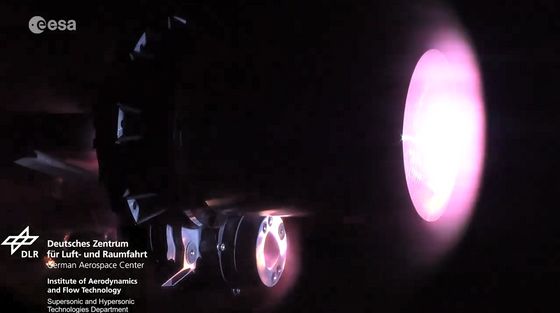
Then, as I looked at it, the parts in front of it burned down ...
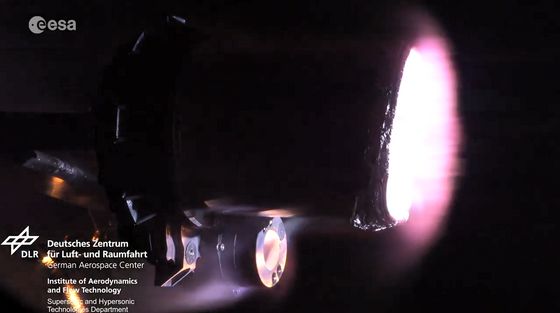
The internal mechanism has been revealed.
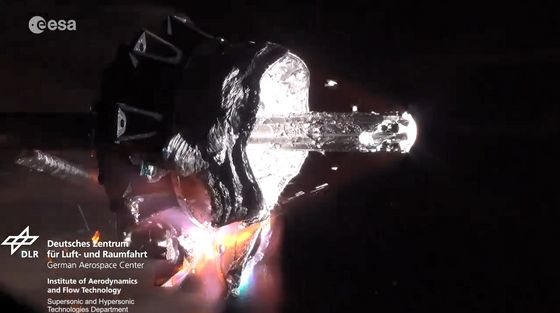
It seems that it will take some time for the parts at the bottom to burn out ...
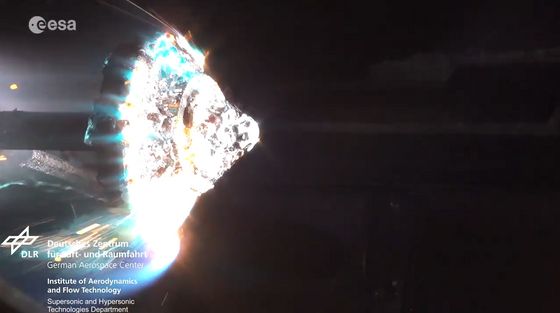
It melts into muddy due to the ultra-high temperature.
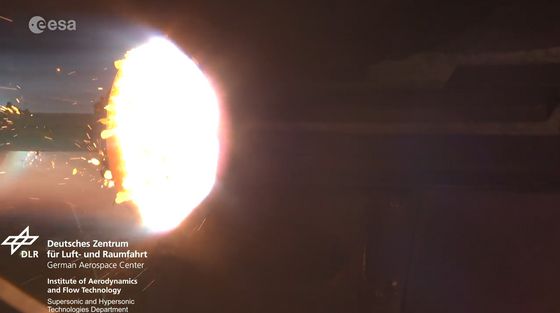
In this experiment, the results were very consistent with the results of the SCARAB simulation test.

Related Posts:





